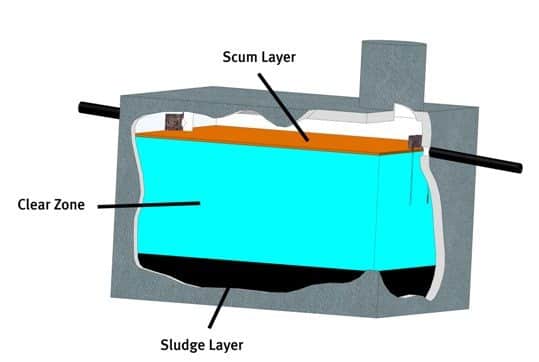There are several claims to watch out for when researching solutions for failed or failing septic systems. One of the more popular claims is:
Our product liquefies the waste in the septic tank.
It is not logical to claim that liquefying organic waste in a septic tank will improve the operating condition of a poorly performing septic system. To understand why, a quick review of how a septic tank functions is needed.
Septic tanks are designed to hold septic waste for a period of time to allow bacteria to break down organic matter into simpler solids and gas and heavier solids to settle at the bottom of the tank. As you can read about in other blog posts and pages within this website, aerobic bacterial environments do this at a much faster rate than the more prevalent anaerobic environments. Nevertheless, both environments need a period of time for the breakdown of the incoming organic matter and solid settling to occur.
Once the breakdown and settling has occurred, three unique layers or zones within the septic tank emerge
– the scum layer at the top of the tank
– the clear zone in the middle of the tank
– the sludge layer at the bottom of the tank

Layers or zones within a septic tank
The clear zone contains the lowest density of organic solids in the tank; it is the “cleanest” solution in the tank. This solution is what is displaced and flows into the drainfield when incoming sewage enters the tank. Having the exiting sewage water contain the least amount of dissolved solids entering the drainfield is the ideal situation for maximizing the life of the drainfield.
Knowing how the septic tank is supposed to function, it is easy to see why liquefying solids in the septic tank is not a good idea. Passing higher concentrations of solids (whether they are liquefied or not) is not good for the drainfield. Once these solids enter the drainfield, they will precipitate out as the water is absorbed into the ground. Over time, these solids will clog the drainfield, leading to system failure.











